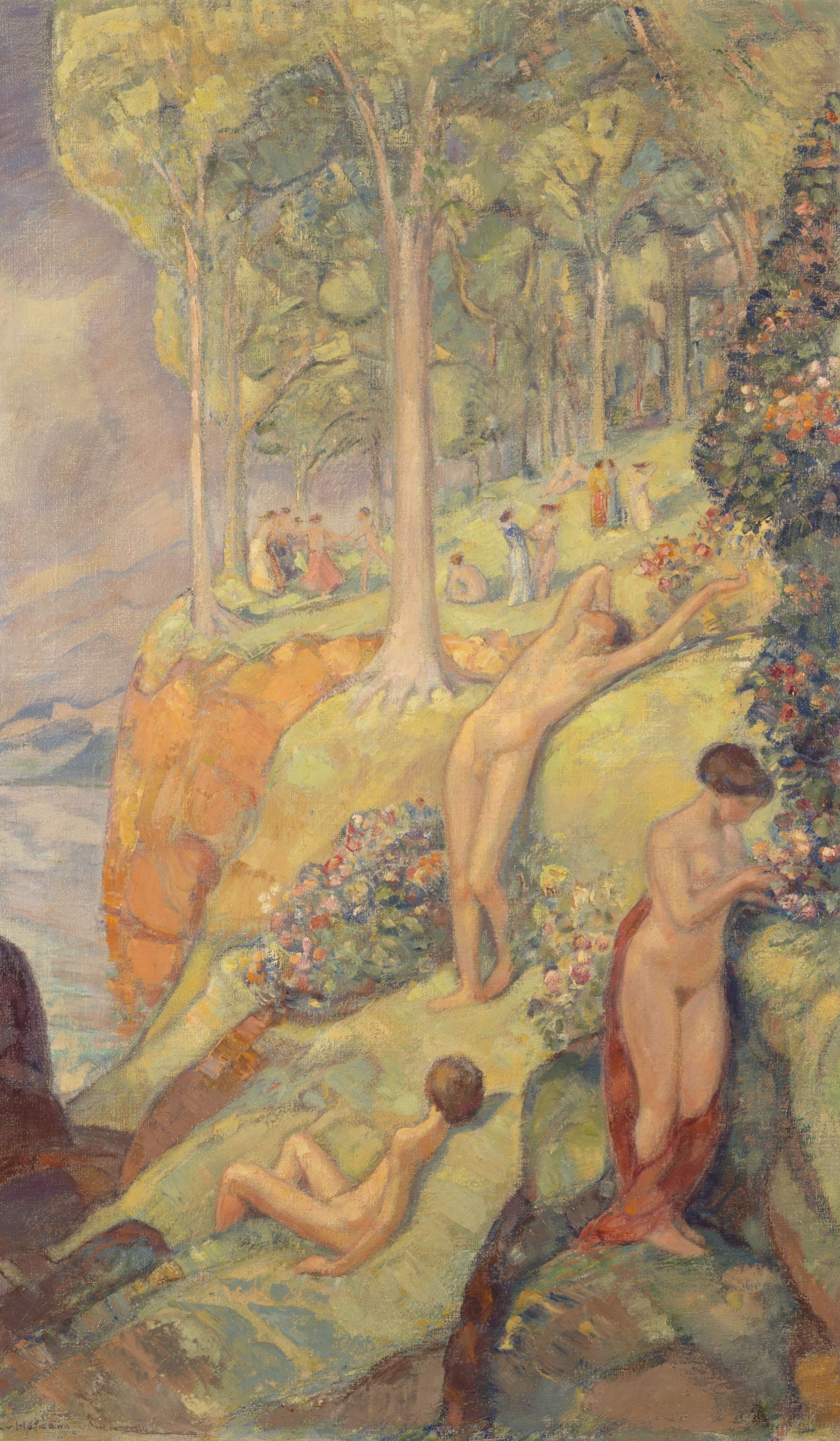| Genre | Painting |
| Materials | Oil on canvas |
| Size | 146 x 86 cm |
| Signature | bottom left: L v Hoffmann |
Restored with the support of the Ernst von Siemens Kunststiftung
Research status
Provenance is unclear and research continues.
Where would you start?
“Life is like a night in springtime, so mysterious, so sensuous. Sometimes a bird flutters from a tree and sings and laughs until our heart almost bursts with desire.”
The poem “Dreamland”, set to music and published by Paul Gutmann (1873–1953) in the youth magazine “Jugend” in 1886, reads like a lyrical prophesy of what Ludwig von Hofmann was expressing in his painting of the same name in 1905.
This work began its journey with the second exhibition organised on Kurfürstendamm in 1905 by the recently founded artists’ association Deutscher Künstlerbund. “Traumland” was listed as no. 71 in the accompanying catalogue. It was marked for sale – and it became rather popular. In 1920 it was still considered worthy of a full-page colour lithographic reproduction in the art magazine “Kunstwart und Kulturwart” published by the 'Lebensreform' movement.

Thomas Theodor Heine designed the poster for the second exhibition by the Deutscher Künstlerbund in Berlin in 1905, where Ludwig von Hofmann showed his “Dreamland”
Thomas Theodor Heine: Poster for the second exhibition by the Deutscher Künstlerbund, Berlin 1905
© Copyright has expired
Colour reproduction of “Dreamland” in the magazine “Kunstwart und Kulturwart”
Colour reproduction of “Dreamland” in the magazine “Kunstwart und Kulturwart”
© Universitätsbibliothek Heidelberg /Kunst und Kulturwart, Heft 18, 1920
“(…) nobody will call it ‘kitschy’ who is not plagued by modernitis,” commented the article “Unsre Bilder”, in: Kunstwart und Kulturwart, vol. 33., no. 17 / 1st June issue 1920, p. 224.
Magazine, Kunstwart und Kulturwart, vol. 33, no. 17 / 1st June issue 1920, p. 224
© Universitätsbibliothek Heidelberg /Kunst und Kulturwart, Heft 18, 1920 / S. 224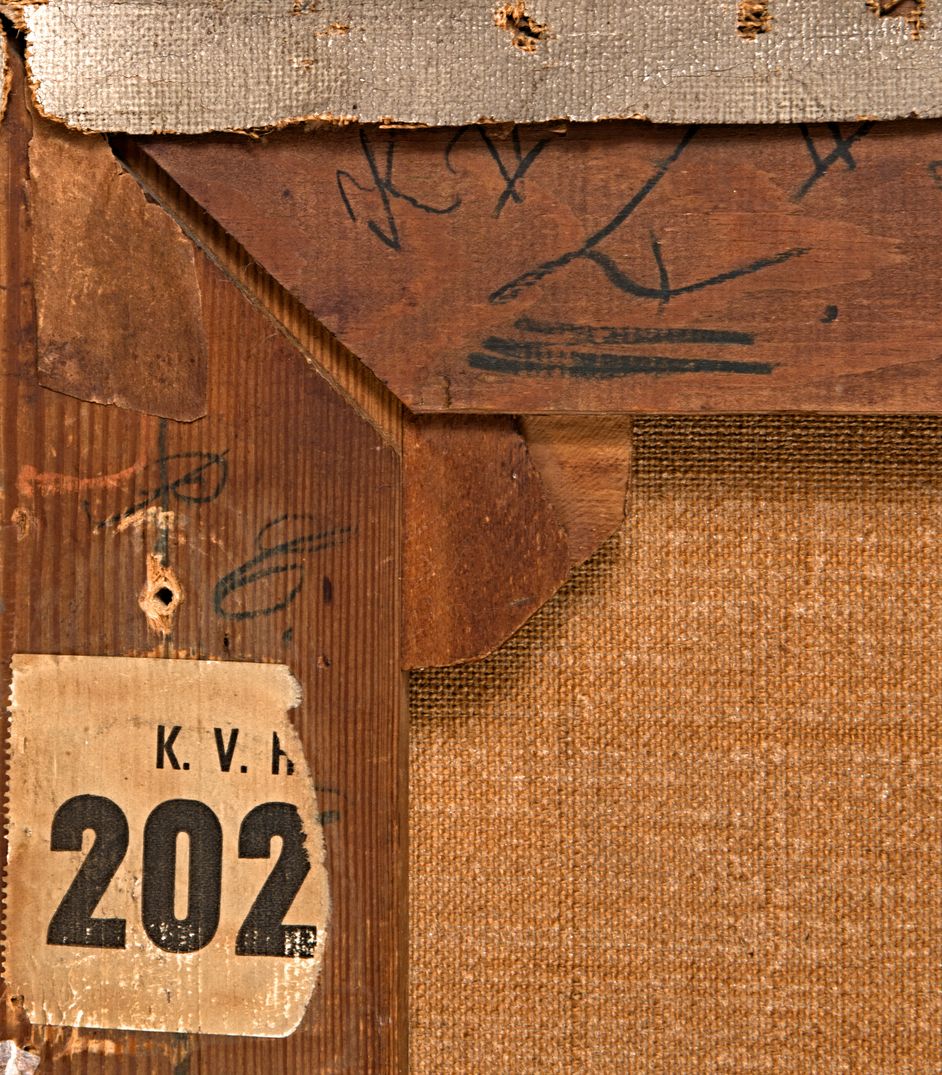
An old Kunstverein Hannover sticker on the frame. Was the painting shown at one of its exhibitions?
Ludwig von Hofmann, Traumland, 1905 (Back, Detail)
© Repro: Kai-Annett BeckerThe plethora of provenance marks on the back of this painting suggests that it passed through many hands after the exhibition in 1905. Identifying and evaluating every item is an ongoing task. Where would you start your research?
A sticker with the abbreviation K.v.H. between chalked numbers top left comes from the association Kunstverein Hannover. Is there a digit missing in the number 202? Most of the association’s historical catalogues are held in the library of the Museum of Lower Saxony, whereas the files are kept in the city archives in Hannover and by the art association itself. If the painting can be linked to an exhibition by the Kunstverein, a search can be initiated for records about the people who loaned the works. If the work was not lent by the artist but by a private individual, the owners need researching. The records might contain an indication that “Dreamland” was sold at an exhibition organised by the association. That, too, would trigger a search for personal details.
On the upper strip of the frame there is a sticker from the frame-maker Theodor Zickendraht, whose workshop was at Kronenstrasse 17 in the Berlin district of Mitte between 1936 and 1943. That might be a sign that “Dreamland” was reframed around that time. Could that be connected to a sale? Did Zickendraht only make frames or did he sell paintings as well? Have any company records survived and might “Dreamland” be mentioned there? Another note has been stuck over Theodor Zickendraht’s label. It says: “Box no. 6”. That suggests that at some point the painting was part of a big shipment. From where to where and why?
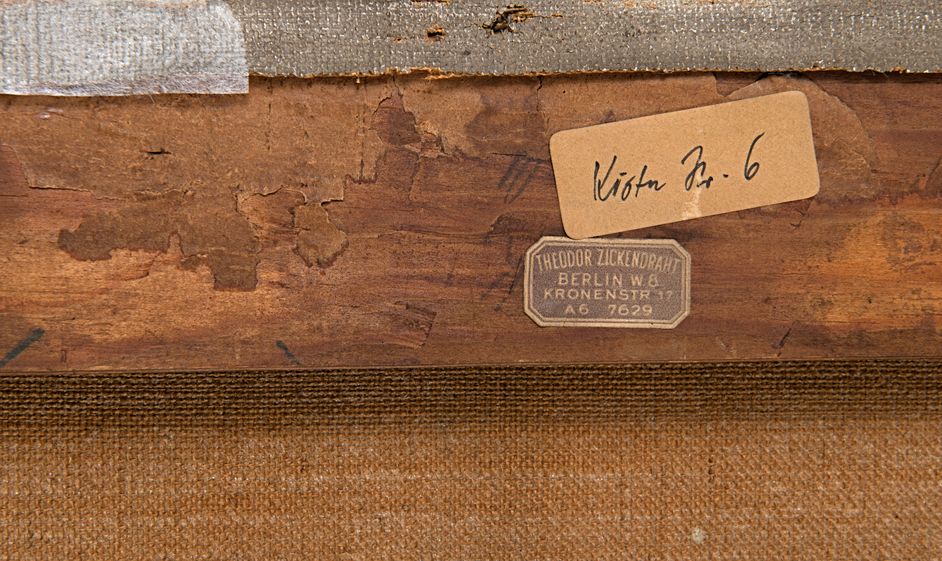
The Theodor Zickendraht label. Did the company only make a new ornamental frame?
Ludwig von Hofmann, Traumland, 1905 (Back, Detail)
© Repro: Kai-Annett Becker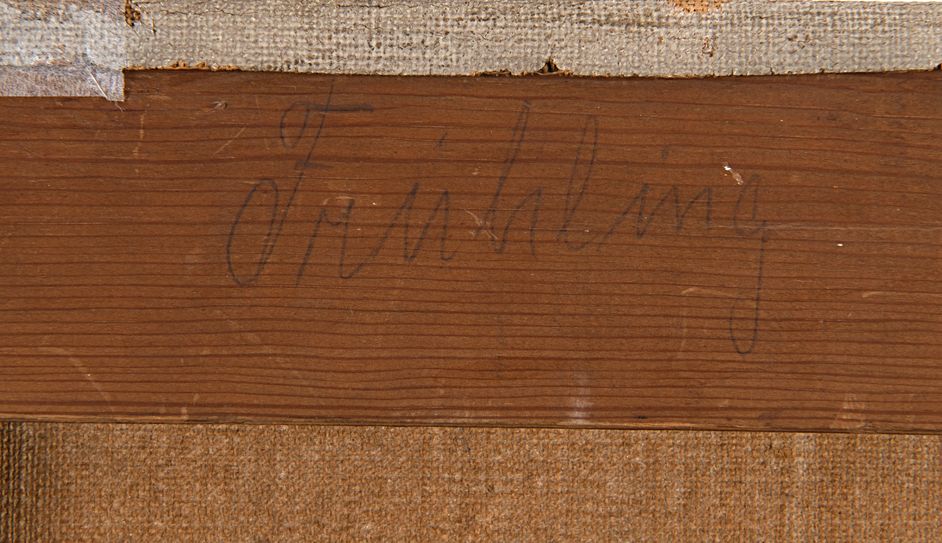
The word “Frühling” (Spring) has been pencilled on the frame.
Ludwig von Hofmann, Traumland, 1905 (Back, Detail)
© Repro: Kai-Annett Becker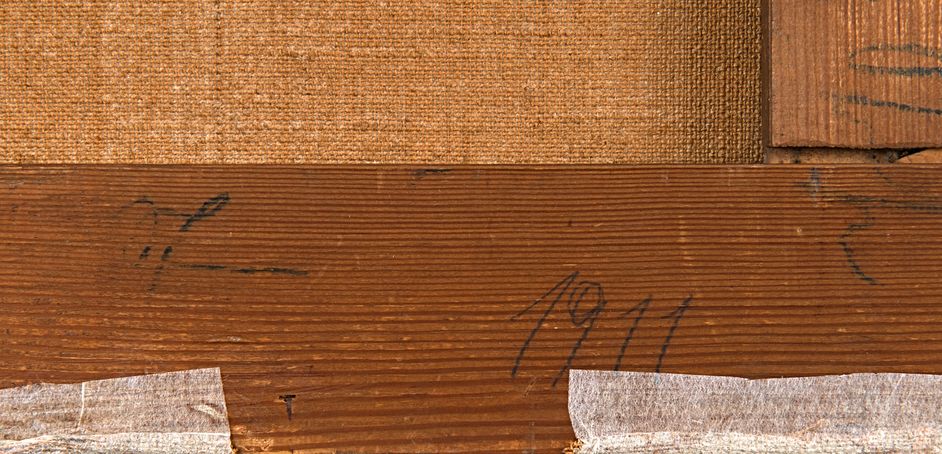
Is 1911 the year, and does it indicate a change of owner?
Ludwig von Hofmann, Traumland, 1905 (Back, Detail)
© Repro: Kai-Annett BeckerSomeone has written “Spring” on the right-hand strip. Does that mean the painting once bore that title? If so, when? The left-hand strip displays the number “1911”. Would that be the year 1911, and could it have something to do with changing hands?
There are no objects reported missing in the Lost Art Database kept by the German Lost Art Foundation that resemble “Dreamland”. Unlike Ludwig von Hofmann’s painting “Rider in the Rocky Bay”, “Dreamland” cannot be traced to an auction before 1945.
The Berlinische Galerie bought the painting in 1975 from the Berlin cloth merchant Willi Küpper. He had been building his collection since the 1960s. How he acquired “Dreamland” is not known.
In other words, there is still no specific information about where the painting has been since 1905. Even so, there is a useful basis for researching into its provenance. There is no doubt, however, that quite apart from visiting archives and sifting through documents – including the estate of Ludwig von Hofmann – this is going to lead to many conversations with people who probably have no idea that “Dreamland” ever belonged to their ancestors.
